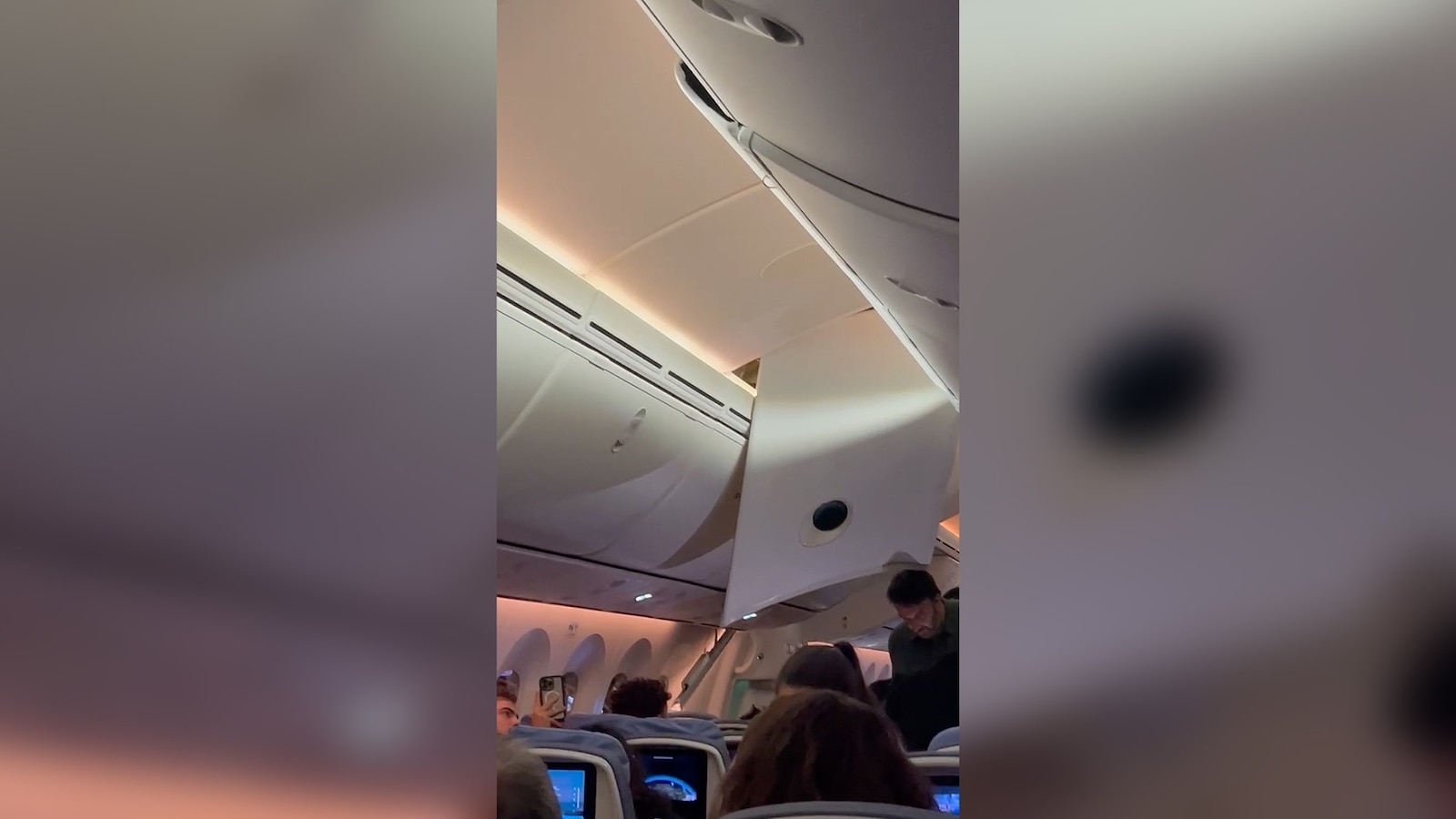Dr. Cecilia Laguzzi was sleeping while on an overnight flight home to Uruguay when the mother of two said she was woken up by severe turbulence and found her 2-year-old son stuck in the ceiling above the overhead compartment.
“It was an image I will never forget,” Laguzzi told “Good Morning America” following the incident on the Air Europa flight, which the airline said resulted in several passengers being hurtled toward the ceiling of the cabin.
The flight from Madrid to Montevideo, Uruguay, experienced “heavy” turbulence early Monday morning and was diverted to Brazil “due to the nature of the turbulence and for safety reasons,” the airline said. The plane landed safely at Natal International Airport in São Gonçalo do Amarante and several passengers were treated for serious injuries, it said.
Laguzzi, a surgeon, said she was returning home from a three-month internship in Barcelona and was traveling with her husband and their two young children when she was woken up by unknown objects hitting her, she said.
“I felt something very hard hitting my head and then my back, and I fell on my head, and I couldn’t get up at first,” she said. “I remember I was in the plane, and I could feel it like falling, like free falling, for what felt like an eternity.”

Dr. Cecilia Laguzzi speaks with “Good Morning America,” July 2, 2024.
ABC News
Laguzzi estimates that after six or seven seconds, the plane resumed normal operations, at which point she started looking for her children, who had been sleeping several seats away near her husband. She found her four-year-old daughter with her husband but couldn’t find her son in the dark, “chaotic” aftermath with passengers and luggage on the floor of the plane.
“We were trying to find him on the floor and started screaming his name until someone told me, ‘Are you looking for a baby?’ and I said, Yes,” she said. “He said, ‘Well, it’s up there,’ and he pointed up, and the minute I look up he was there crying, looking at us.”
Laguzzi said they found their son above the luggage compartment where plastic had broken off, and her husband was able to retrieve him.
“I’ll never forget how I felt in that moment,” she said. “He was crying, he was very scared, and we were all very scared as well, but the moment I took him in my arms, he calmed down.”
Laguzzi said she looked him over and he seemed fine. She said her family is a “little bruised up,” but they are otherwise OK.
Forty people were injured, some seriously, during the incident, officials said. Thirty people received medical care at the airport, while 10 had to be transported to the hospital for further examination, the airport confirmed to ABC News Monday night.
Seven passengers remained hospitalized in serious but not life-threatening condition as of Tuesday morning, Air Europa confirmed to ABC News.

Damage to the cabin is seen on an Air Europa following severe turbulence, July 1, 2024.
@Natalia_gimeno
Laguzzi said she went to tend to other passengers after a flight attendant asked for a doctor on the plane.
“Most of the people I saw had severe back pain from the trauma, but I also saw some fractures — legs, shoulders, collarbone, nose fracture,” she said. “As these plastic panels fell down, they fell on people and they fell on their faces, arms and such.”
Laguzzi said that following her assessment of the injuries, a crew member asked her if she thought the plane should make an emergency landing in Brazil or continue on to its final destination in Uruguay — another four hours away. The doctor urged the crew to land as soon as possible to get the injured immediate care, she said.
The plane requested an emergency landing around 2:32 a.m. local time Monday, according to the Natal airport. Laguzzi said first responders started triaging patients once they landed. After several hours of waiting on the plane and then in the airport, passengers started being transported to Recife by bus to continue their flight to Montevideo, she said.
Laguzzi said she was a little nervous to get back on a plane but “I just wanted to get home, whatever it took.” The family made it back home Tuesday morning, she said.
The incident remains under investigation, Air Europa said.
The plane flew through an area called the Intertropical Convergence Zone, where there is a belt of thunderstorms, according to ABC News contributor Col. Steve Ganyard, a retired Marine Corps fighter pilot.
Laguzzi said the whole ordeal was “traumatizing,” and she doesn’t plan on flying “for a long time.”
“It was very hard to be in these situations,” she said. “When you have small children, you feel so helpless, you know. You wish you could do more, but the situation is very overwhelming.”
Ganyard said when it comes to turbulence there are two things to remember.
“One is the airplane is very, very strong,” he said. “The second is, nobody that’s wearing a seatbelt gets hurt. It’s only the people who are not belted in that get hurt.”

